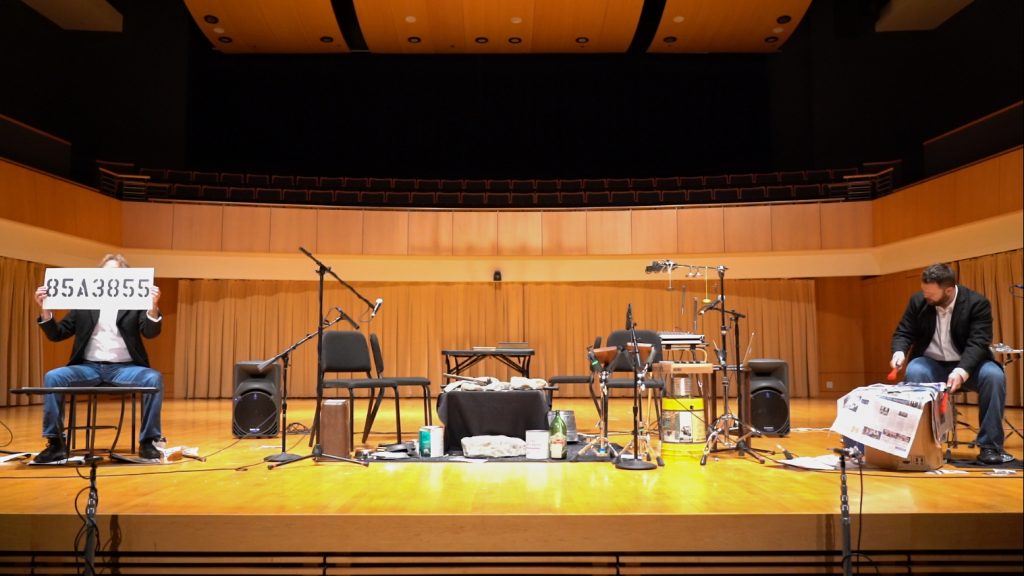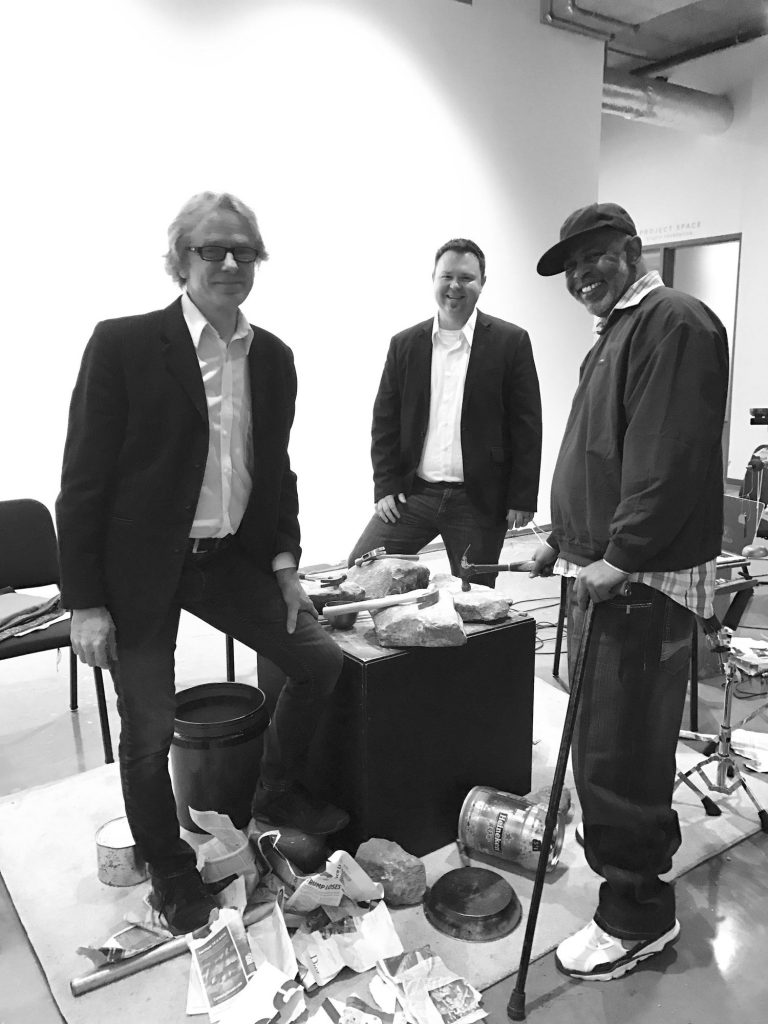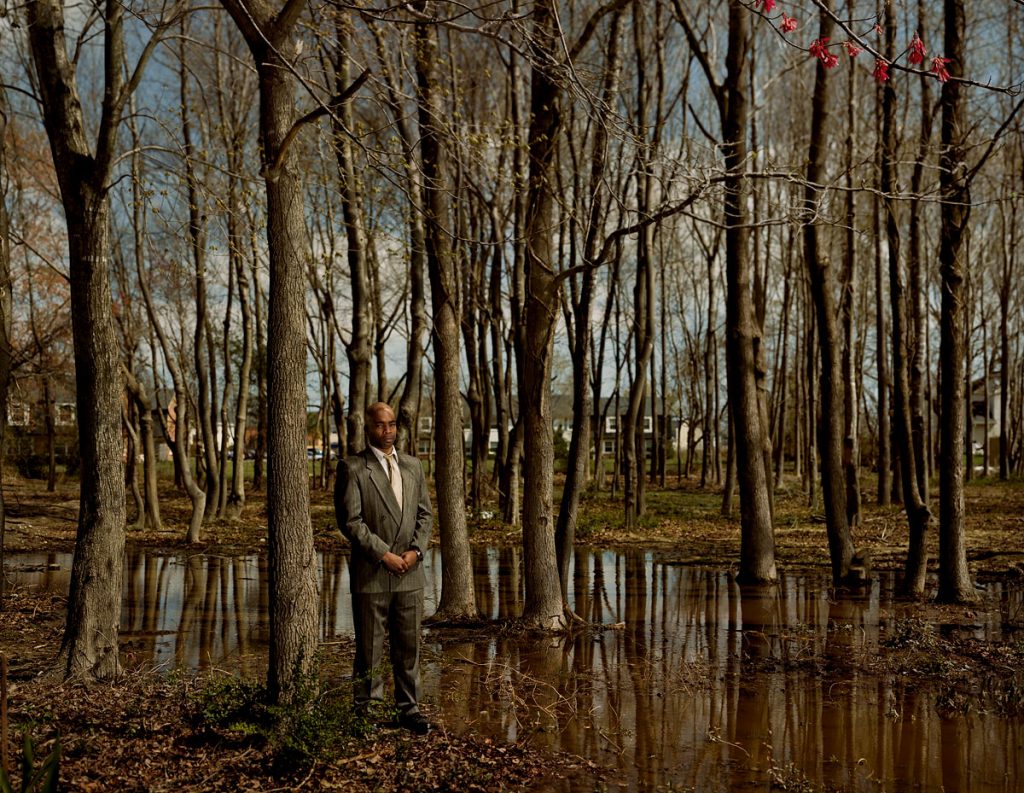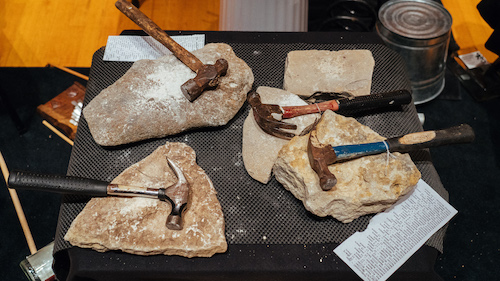by Jarrett Hoffman

That scenario is more common than you may think. Percussionists Allen Otte and John Lane will explore the issue of wrongful conviction in the U.S. justice system this weekend through their work The Innocents, which involves the spoken word, non-traditional instruments, African mbiras/kalimbas, and electronics.
The free concerts take place at Ludwig Recital Hall at Kent State University on Saturday, September 14 at 7:30 pm, presented as part of the Vanguard Guest Artists Series, and at Stull Recital Hall at Oberlin Conservatory on Sunday, September 15 at 4:30 pm.
The catalyst for The Innocents was artist Taryn Simon’s project of the same name, in which she photographed individuals who had been imprisoned for violent crimes they did not commit, and who were later exonerated. When an exhibit of her work came to the Cincinnati Contemporary Arts Center in 2006, a performance piece was planned to celebrate the opening of the show.
That piece involved director Michael Burnham and actors in the drama department at the University of Cincinnati College-Conservatory of Music, with Otte and Lane providing music. Last year, the two percussionists revised and distilled that work down into the version they’ll perform in Northeast Ohio, written for two speaking performers.
I spoke to Otte and Lane in a conference call and began by asking them about the beginning: what they saw in Taryn Simon’s photos, and how they reacted.
John Lane: She brought these individuals to the scene of their alibi, or in some cases to the actual scene of the crime, and took these amazing, vibrantly colored portraits. They’re visually striking — huge portraits, larger than life. [Below: Simon’s portrait of Troy Webb at the scene of the crime: The Pines at Virginia Beach. He was sentenced to 47 years for rape, kidnapping, and robbery, and served 7 of those years.]
Allen Otte: I have to jump in and say, John, that this is the first time you’ve used the term “larger than life,” and it strikes me that that’s exactly what we’re talking about here. It’s something that theoretically could impact any of us, and it’s the most life-changing issue one could possibly imagine.
JL: Of course she’s also playing with the idea of mistaken identity. A lot of these people were picked out of a lineup or photo array, or they were just in the wrong place at the wrong time. From what I understand, that was a big part of her photography, and it’s one of the layers of the piece that we tried to capture initially.
The most powerful moment for us happened when we went to the gallery. They had a video and some headphones set up, and you could sit down and watch interviews with some of the individuals that she had photographed. I distinctly remember a guy sitting at his kitchen table drinking a beer, tears in his eyes, talking about how his life had been taken away from him. It was horribly sad — tragically sad — to the point where, you know, you just feel it in your gut. I felt so small in that moment.
AO: It’s an issue that neither of us had ever thought about at all. We absolutely stumbled into this by an invitation. But once this is opened to you, there’s lots to learn, and you even feel a bit embarrassed to have never given it a thought. We all hear about the terrible problem of mass incarceration in this country, and this is just a small subset of that.

JL: This piece took on a bigger part of our lives in the last couple of years — we made a concerted effort because of an experience that we had during a residency at the University of Georgia. We were on a panel discussion with a lawyer from the law school, a practicing criminal lawyer, an Innocence Project representative, and an exoneree. And when it was our turn to speak, I just had to say, “Look, sometimes I feel like what we’re doing isn’t enough.”
The criminal lawyer said, “No, that’s absolutely wrong. We have law students, volunteers from the community, and former lawyers who come in and do the work that needs to be done. But what we absolutely can’t do is reach the emotional core of this issue.” And that’s something that artists are uniquely poised to do. [Above: Otte, Lane, and Clarence Harrison, the first person to be exonerated by the Georgia Innocence Project.]
AO: What we’ve also found is that is that we can report back to other musicians, music students, or kids who are thinking about careers in art and tell them that this is a tremendously satisfying thing to be able to do. There are courses now in just about every music department in the country on how to hone your own brand, and the idea is to raise your voice in the name of something bigger than yourself. It doesn’t have to be this issue — there are plenty of crucial issues all around us.
And all the training that John and I have gone through all of these decades — our passion for music, for the instruments, for the concepts of creating musical structures — none of that has been left behind. Ultimately what we’re trying to contribute will not make its mark if it’s musically not as interesting as it could be.
JH: Let’s get to the instruments. There’s a video that shows you hammering on rocks, shuffling books around on a table, and jangling a chain. You also play the mbira, that beautiful thumb piano. How did you make those choices?
JL: We made a very deliberate decision early on that we didn’t want to have any traditional percussion instruments onstage — we wanted to use found objects. The rocks came in the first iteration of the piece. I remembered field recordings that Alan Lomax made of prison songs, where the prisoners are singing as they’re breaking rocks out in the prison yard. I spliced together some moments from that and made a backing track for us, so that we’re smashing rocks right along with the prisoners.
And as the piece has grown, we’ve figured out that there are psychological underpinnings to the instrumentation. We have newspapers, cardboard boxes, cans, bottles — bits of recycling material that make the sounds that we wanted to use. But those could also represent homelessness or poverty. A lot of the people who get wrongfully convicted are in those situations.
JH: What texts do you use?
AO: Some come directly from prisoners — from their journals, and from projects where people work with prisoners in therapeutic ways and publish books of their poems. We also read abstract texts and accompany them.
JH: In your program notes, you write that some sections of the work are simple and direct, while others are contrastingly long or chaotic, and meant to be uncomfortable. Is it difficult to trust the audience to stay with you?
JL: We want to be advocates for the issue, and if the piece makes an audience member uncomfortable, that’s probably a sign that it’s working. Ultimately it’s about the resiliency of the individuals who come through this and somehow are able to transcend the experience. Some of them don’t, but many of them become very positive and somehow survive it.
Published on ClevelandClassical.com September 10, 2019.
Click here for a printable copy of this article




